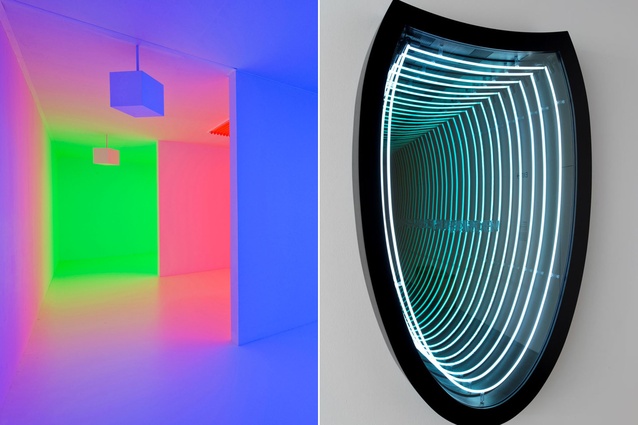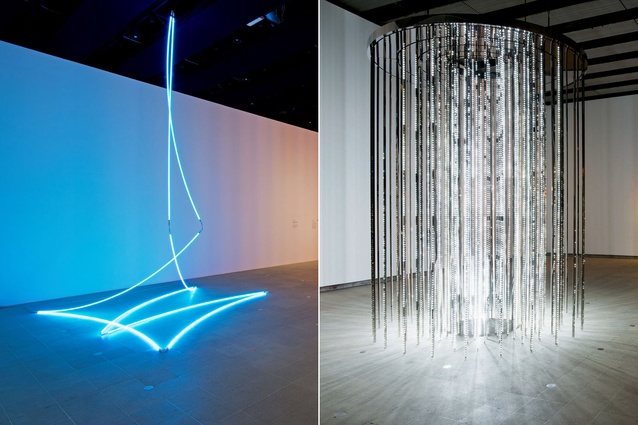Light Show 2014
Auckland Art Gallery Toi o Tāmaki will be presenting Light Show starting 11 October. The exhibition, which debuted at the Hayward Gallery (London) in 2013, is starting its world tour in New Zealand and promises to be a fascinating exploration of the many qualities of light and its ability to transform interior spaces.
Among the 20 pieces is New Zealand artist – and most recent national representative to the Venice Art Bienale – Bill Culbert’s Cascade. The piece is described by Auckland Art Gallery Principal Curator Zara Stanhope as “a classic Culbert wall work. With simple materials, white neon pieces and layers of plastic bottles, Culbert magically creates the impression of a spill of water or liquid light”. Some of the major pieces include Carlos Cruz-Diez’ Cromosaturación (pictured on previous page), Conrad Shawcross’ Slow Arc Inside a Cube, and a piece by Olafur Eliasson (his architectural installation Your Rainbow Panorama, in Belgium, was featured in Interior last March).
The 1965 installation Cromosaturación, by the Venezuelan-born Diez, consists of three white rooms, each brightly lit by different-coloured fluorescent lights. The piece takes colour to an extreme, immersing the audience in purely monochromatic environments. The visual saturation from one room is said to remain in the retina as visitors move into another space, creating colour mixes and distortions that take place purely in the mind rather than in the physical world.
Shawcross’ piece uses the shadows made by a lightbulb on a rotating mechanical arm to create receding and expanding patterns on the gallery walls. As the bulb swivels inside a latticed box, the cube-like projections play with the viewer’s depth of field and (rather unstable) sense of perspective.
An array of bulbs and gadgets is being shipped from England for this photon-bending extravaganza. Custom-made, computer-manipulated LEDS (over 19,000 of them for Leo Villareal’s Cylinder II pictured above), artificial haze machines, etc. So… wrapping things in newspaper and a bit of bubblewrap won’t cut it. “Light Show is a mammoth event in terms of transport. Imagine packing delicate fittings, one-off handmade bulbs and electrical equipment for travel in shipping containers from Europe to New Zealand. In addition, some works are travelling separately from the artists’ studios and require their specialists/technicians to fly in for installation,” said Stanhope.
Chris Bennewith, academic at Massey University in Wellington, and creative director of the capital’s light art show (the Lux festival) explains how these types of shows are not solely aesthetic excursions. “They have very real commercial applications,” he explains. “These artists are pushing the boundaries of new technologies and a lot of these art pieces are often picked up by architects for use in commercial spaces.”












